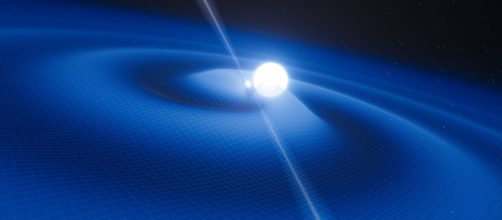A single star SO-2 with no binary companion has caught the attention of astronomers, as it can provide new information about the Theory of General Relativity. This start will travel. At the center of the Milky Way lies a supermassive Black hole named Sagittarius A with a mass of 4 billion suns; and the great power to pull everything that approaches to velocities of 30 million km (18.5 miles). Astronomers expect to make accurate gravitational redshift measurements of SO-2. The distance at which this start will be from the massive BH at the time of the measurement will be key to get precise data on the deformation of space-time.
Sagittarius A
At the center of the Milky Way in the direction of the constellation Sagittarius is where this BH is located. Its mass is that of 4.3 million suns. This object distorts time and space around it posses a strong gravitaionla pull that nothing, not even light can escape from it. Stars that approach the outer ring of this BH are accelerated to speeds that reach 3% the speed of light. This allow scientists to know that a massive object is there and this is what will permit them to test with precision the theory of general relativity when SO-2 reach its close approach to this massive object.
SO-2
This is a star that is situated in the vicinity of radio source Sagittarius A. Its orbital period is 15.5 years.
It´s classified as an S star (high velocity star). The orbit of this star ewill give astronomers the opportunity to test the effects predicted by general relativity and other extra dimensional results. Although it was suspected that this star had a binary companion which would have complicated the observation, it was discovered that it does not; therefore, SO-2 will permit to accurately measure gravitational redshift.
Gravitational Redshift
This is an effect in which gravity is the result of massive objects distorting space-time. According to Einstein General Theory Of Relativity, massive objects in the universe deform space and time; space around these objects shrinks or stretches and time slows down.
When a star gets close to a massive object, its light has to get out of a gravity well in space-time, taking energy which causes the stretching of light in longer wavelengths, making it appear red or redshifted.
Scientists believe that SO-2 is key at making gravitational redshift measurements, as the star, when reaching its closest distance from the Massive Black Hole, will be at distance of the one that separates the sun from Pluto or 17 light hours.


